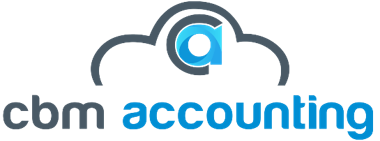[lwptoc]
Value Added Tax (VAT) is a consumption tax levied on most goods and services in the United Kingdom. As a UK business owner, understanding VAT registration, compliance, and reporting obligations can help businesses avoid penalties and manage cash flow efficiently. This guide provides an overview of VAT in the UK and essential tips for businesses.
What is VAT?
VAT is a consumption tax levied on most goods and services in the UK. It’s added to the price at each stage of the supply chain, ultimately paid by the end consumer. Businesses act as collectors, charging VAT on their sales (output VAT) and reclaiming VAT paid on their purchases (input VAT).
Key Concepts:
- VAT Registration: Businesses must register for VAT if their taxable turnover exceeds the current threshold (currently £85,000). Voluntary registration is also possible and can be beneficial for some businesses.
- VAT Rates: There are three main VAT rates in the UK:
- Standard Rate (20%): Applies to most goods and services.
- Reduced Rate (5%): Applies to specific goods and services, such as domestic fuel and some building work.
- Zero Rate (0%): Applies to essential goods and services, such as most food, books, and children’s clothing.
- Exempt Supplies: Some goods and services are exempt from VAT, such as insurance, education, and certain financial services.
- Output VAT: The VAT a business charges on its sales.
- Input VAT: The VAT a business pays on its purchases.
- VAT Returns: VAT-registered businesses must submit regular VAT returns to HMRC (Her Majesty’s Revenue and Customs), typically quarterly.
- VAT Invoices: VAT-registered businesses must issue VAT invoices to their customers, detailing the VAT charged.
- Making Tax Digital (MTD) for VAT: Most VAT-registered businesses must keep digital records and submit their VAT returns using MTD-compatible software.
Who Needs to Register for VAT?
Businesses must register for VAT if:
- Their taxable turnover exceeds £85,000 in a rolling 12-month period.
- They expect to exceed the threshold within the next 30 days.
- They buy goods worth more than £85,000 from other VAT-registered businesses in the UK.
Voluntary VAT Registration
Even if a business is below the threshold, voluntary registration allows it to reclaim VAT on expenses and improve its credibility with customers.
VAT Returns:
- Accurate record-keeping is vital for completing VAT returns.
- Ensure you understand the deadlines for submitting returns and making payments.
- Use MTD-compatible software to simplify the process.
Input VAT Recovery:
- You can reclaim input VAT on purchases that are wholly and exclusively for business purposes.
- Keep accurate records of all purchases and VAT invoices.
- There are restrictions on reclaiming input VAT on certain items, such as business entertainment.
Exempt and Zero-Rated Supplies:
- Understand the difference between exempt and zero-rated supplies.
- Zero-rated supplies are taxable at 0%, allowing you to reclaim input VAT.
- Exempt supplies are not taxable, and you cannot reclaim input VAT.
Making Tax Digital (MTD) for VAT:
- MTD requires businesses to keep digital records and submit VAT returns electronically.
- Use compatible software to ensure compliance.
- HMRC provides guidance and support for businesses transitioning to MTD.
VAT Schemes for Businesses:
- Flat Rate Scheme – Simplifies VAT payments for small businesses.
- Cash Accounting Scheme – Pay VAT only when you receive payments from customers.
- Annual Accounting Scheme – Submit one VAT return per year instead of quarterly.
VAT Payment Deadlines:
- Quarterly VAT returns: If you submit quarterly VAT returns, the deadline is one month and seven days after the end of the quarter.
- Annual VAT returns: If you submit annual VAT returns, the deadline is two months after the end of the accounting period.
VAT Deregistration:
A business can deregister for VAT if its turnover falls below £83,000 or if it stops trading. Deregistration must be requested through HMRC.
Common VAT Mistakes to Avoid:
- Missing VAT deadlines, leading to penalties.
- Incorrect VAT rate application on goods and services.
- Failure to keep proper VAT records for auditing.
- Not reclaiming input VAT on eligible business expenses.
Tips for Managing VAT:
- Use accounting software to automate VAT calculations and record-keeping.
- Regularly reconcile your VAT account.
- Stay up-to-date with changes in VAT rules and regulations.
- Seek professional advice from an accountant or tax advisor.
Seeking Professional Help
If you’re unsure about VAT or need guidance on compliance, consider consulting with a tax professional or accountant. They can provide valuable advice, help you navigate VAT complexities, and ensure your business remains compliant with tax laws.
CBM accounting, your trusted accounting partner!

